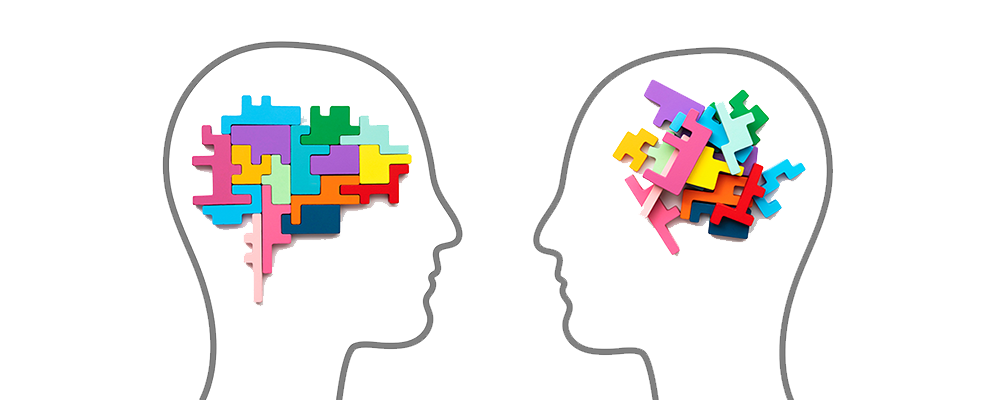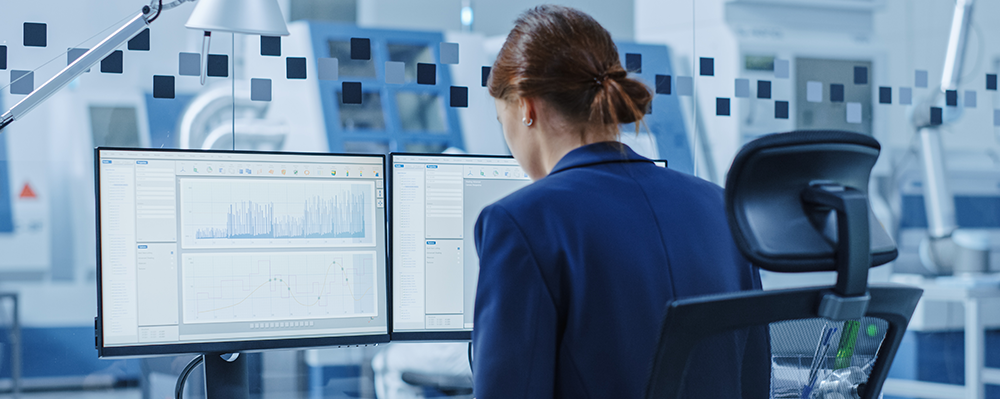Each new year brings many new opportunities and challenges for validation and quality professionals across the life sciences sector. 2022 is no different, with upcoming new regulations, evolving industry best-practice, and new technologies all serving to advance the role of validation in life sciences. In this article we outline three key emerging validation trends to watch in 2022:
1. Critical thought and risk-based approaches
2. New technologies, new validation challenges
3. Sustainability becomes a validation opportunity
 1. Critical thought and risk-based approaches
1. Critical thought and risk-based approaches
Encouraged by the FDA’s emerging ‘commonsense’ regulatory outlook, the GAMP® 5 framework it’s underpinned by, and the ever-increasing volume of computer-systems involved in manufacturing, the role of critical thinking and risk-based prioritization will grow in 2022.
The FDA’s novel approach to Computer Systems Validation (CSV) – Computer Software Assurance (CSA) – represents a step-change in computer system validation, placing a risk-based approach and critical thinking at the center of the CSV process, as opposed to a traditional almost “one size fits all” approach.
The FDA’s Center for Devices and Radiological Health (CDRH) intends to publish its draft guidance on Computer Software Assurance for Production and Quality System Software in 2022 (1). The FDA’s guidance on CSA is eagerly awaited by validation professionals and will result in a re-boot of quality best-practice. The guidance aims to reduce the burden of CSV, improve quality, remove non-value-added activities, and focus testing on high-risk areas only.
CSA offers many benefits to the Life Sciences industry. It will reduce validation cost and time by focusing on the software’s impact on patient safety, impact on product quality, and impact on quality system integrity (Direct or Indirect system). Other benefits include:
- reduction in cycle times (test creation, review, and approval)
- system can be broken into features, and only the High-Risk features will require scripted testing
- reduced test script execution time
- lower number of detected defects (for example script errors and configuration)
- reduction in the number of generated documents (for example the use of the combining deliverables and test scripts)
- testing focused on ensuring SW Quality
- better use of Supplier Qualification
- maximized use of CSV and Project Resources expertise (for example subject matter-experts)
- release of the CSA guidelines will support companies who have taken the path to automation
Importance of GAMP®5 and how it underpins CSA
GAMP®5 rationale supports that of the FDA’s CSA guidance in that both guidelines promote a risk-based approach with critical thinking – increasing validation efficiency whilst evidencing that the computer system works as intended.
The acronym GAMP stands for Good Automated Manufacturing Practice. The International Society for Pharmaceutical Engineering’s (ISPE®) framework “GAMP® 5: A Risk-Based Approach to Compliant GxP Computerized Systems” delivers industry guidance with input from pharmaceutical industry professionals (2). According to the ISPE®, the aim of the guidance is “to achieve compliant computerized systems that are fit for intended use in an efficient and manner, while also enabling innovation and technological advances”(3).
The risk-based approach advocated by GAMP®5 is in line with both the application of the European EMA and US FDA regulations governing computer system validation, Annex 11 and 21 CFR Part 11 , respectively (4),(5),(6),(7). The guidance therefore acts as a valuable reference and accepted framework for CSV within the Life Sciences industry.
As well as helping to ensure regulatory compliance, GAMP®5 is also useful in determining the scope of testing. The risk-based approach, outlined in the guidance, enables engineers to focus testing efforts on the high-risk areas of a system – whilst devising a method for performing reduced testing on areas that may be deemed low risk. In this way, testing can be adapted to the system being validated.
You can learn more about the benefits of CSA and GAMP5 in our article, authored by Darren Geaney, a Process Engineer with over 20 years’ experience in Quality Assurance, specializing in Computer System Validation: “What is Computer Software Assurance (CSA) and why are the FDA transitioning from traditional Computer System Validation?” | Read article
 2. New technologies, new validation challenges
2. New technologies, new validation challenges
The where, when, and how of validation for Life Sciences is changing. Pharma 4.0’s technological advances, accelerated by workplace restrictions imposed by Covid-19, have amplified the need for new technological solutions to support validation processes, reduce risk of non-compliance with Good Manufacturing Practice (GMP), and protect the commercial growth of businesses.
Originally conceived of by the ISPE, “Validation 4.0” a validation model tailored to the product lifecycle through data-integration and supply chain visibility, will grow in popularity as a means of addressing the ever-expanding range of new manufacturing technologies being implemented and their validation requirements.
Validation 4.0 is part of the Pharma 4.0™ plan. Pharma 4.0™ is an initiative launched by the ISPE. It’s mission? To bring the pharmaceutical industry more fully in line with the concept of the digital factory. The initiative offers practical guidance and regulatory best practice for the industry, to accelerate the transformation of existing Life Sciences facilities to Pharma 4.0™ standard.
The role of validation 4.0 is to foster the transition to a data-powered and technology-driven approach to compliance. In the ISPE’s Industry Perspective, co-authored by Chip Bennett, PMP, Hans Heesakkers, Stefan Horneborg, Gilad Langer, PhD, Line Lundsberg-Nielsen, PhD, Anthony J. Margetts, Ph.D., and Frtiz Röder, we see a reiteration of the need for validation to adapt and innovate in line with smart factory practices:
“As Pharma 4.0™ increasingly becomes reality, our validation practices must change. We can no longer apply 20th-century thinking to 21st-century technology and resources. Validation must adapt to industry shifts from iterative to disruptive innovation, from batch to continuous processing, from bulk processing to personalized medicine, from centralized systems to the Internet of Things (IoT), from controlled data to distributed data, and similar changes (8).”
Many Life Sciences organizations have already taken great strides towards meeting validation 4.0 objectives. No-code SaaS platforms, like Kneat are helping to make e-validation smart technology accessible to all key players and are giving end users unprecedented capability to create, manage, access, and mine validation data in just a few clicks and ensure that they are always audit ready.
3. Sustainability becomes a validation opportunity
As political and economic pressure increases on life sciences to become more sustainable, sustainability will deepen as a tenet of organizational culture – reaching quality assurance and validation teams previously sheltered from the issue.
Despite the establishment of the Pharmaceutical Supply Chain Initiative in 2006 and the sustainability efforts of leading life sciences companies, pharma’s carbon footprint has grown to surpass the automotive industry, by a significant margin of 55% – making the industry one of the worst polluters in the world (9).
Historically, the attention and focus of the industry’s senior leaders is often placed on more conventionally acknowledged polluters such as energy, facilities, and supply chain – despite the environmental footprint of paper-based validation. As external pressures change organizational culture, validation will be expected to contribute sustainability solutions – to which digitization presents opportunity.
By digitizing the entire validation lifecycle, through the elimination of validation on paper alone, Kneat enables companies to decrease their carbon footprint by over 1.5 tons, whilst achieving efficiencies that drive the bottom line.
The carbon offset on travel created by Kneat’s remote validation capability is much greater again – with an average carbon offset of half a metric ton, per person, per domestic air-travel event for projects where Kneat is used (10). This is particularly impactful in global CSV projects, capex C&Q & FUE projects, and where global processes are in place, where staff and supplier travel is frequent or ongoing.
As pressure increases on life sciences to resolve its burgeoning sustainability woes, digitization will enable validation teams to help their organizations to solve the challenge of sustainability.
 Final thoughts
Final thoughts
A new future is taking shape faster than we could ever have imagined, dictated by the unprecedented times that we are all living and working in. Many of the major players from within the Life Sciences industry – including seven of the world’s top ten Pharma companies today – have already adopted our technology to advance their validation processes at this time.
Leveraging Kneat Gx, our innovative cloud-based validation software releases the power of data, speeds up validation processes by reducing cycle-time, and gets products to market faster than even before – creating competitive advantage. Rapid access to global data, coupled with speed and ease of use of online validation applications, boosts efficiency and future-proofs internal validation operations and processes for deployment at scale, into 2022 and beyond.
References
- CDRH Proposed Guidances for Fiscal Year 2022, Federal Drug Association, [https://www.fda.gov/medical-devices/guidance-documents-medical-devices-and-radiation-emitting-products/cdrh-proposed-guidances-fiscal-year-2022-fy2022].
- GAMP 5 Guide: Compliant GxP Computerized Systems, International Society of Pharmaceutical Engineering, [https://ispe.org/publications/guidance-documents/gamp-5].
- GAMP 5 Guide: Compliant GxP Computerized Systems, International Society of Pharmaceutical Engineering, [https://ispe.org/publications/guidance-documents/gamp-5].
- European Medicines Association, [https://www.ema.europa.eu/en].
- Federal Drug Association, [https://www.fda.gov/].
- Eudralex Annex 11, European Commission, Health and Consumer Directorate-General, [https://ec.europa.eu/health/sites/default/files/files/eudralex/vol-4/annex11_01-2011_en.pdf].
- CFR 21 Part 11, Federal Drug Association, [https://www.accessdata.fda.gov/scripts/cdrh/cfdocs/cfcfr/CFRSearch.cfm?CFRPart=11].
- Industry Perspective: Validation 4.0 – Shifting Paradigms, International Society of Pharmaceutical Engineering, [https://ispe.org/pharmaceutical-engineering/november-december-2020/industry-perspective-validation-40-shifting].
- How Green is Pharma?, Forbes, [https://www.forbes.com/sites/forbesbooksauthors/2021/12/03/how-green-is-big-pharma/?sh=6982613d3207].
- Infographic: Environmental impact of in-person vs. virtual meetings, Impetus Digital, [https://www.impetusdigital.com/2020/10/14/infographic-environmental-impact-of-in-person-vs-virtual-meetings/]






